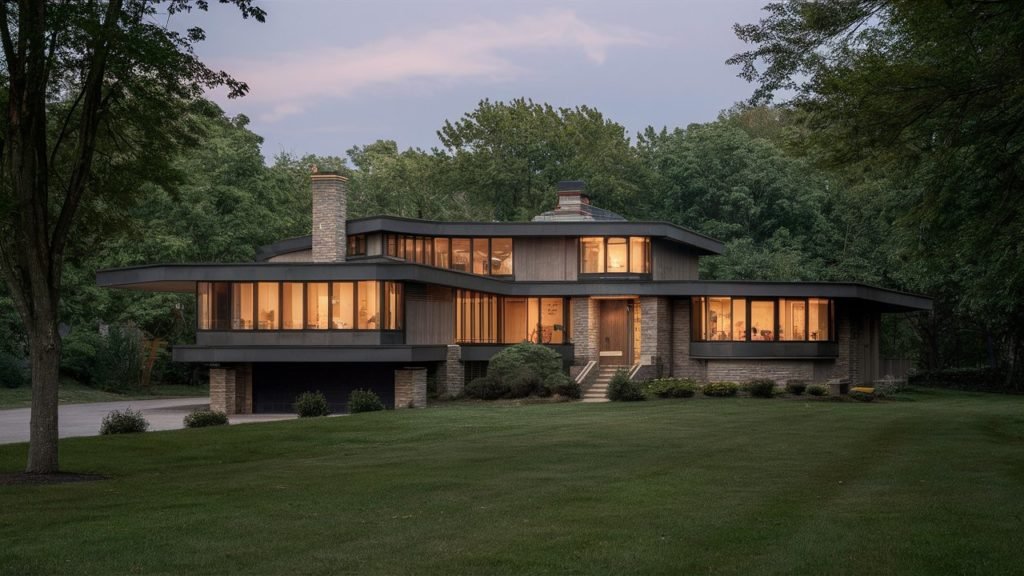Florida’s updated 2025 building codes represent the most comprehensive safety and resilience standards in the state’s history. Following recent devastating hurricanes and evolving climate challenges, these enhanced requirements demand superior construction methods that go far beyond traditional building practices. Steel homes from FloridaSteelHomes.com not only meet these stringent new standards but exceed them significantly, providing unmatched protection and compliance assurance.

Contents
- 1 Understanding the 2025 Florida Building Codes Updates
- 2 Major Code Enhancements
- 3 How Steel Construction Exceeds Wind Resistance Requirements
- 4 Enhanced Flood Resistance Compliance
- 5 Exceeding Structural Integrity Standards
- 6 Energy Efficiency Code Compliance
- 7 Fire Safety Code Enhancements
- 8 Accessibility and Universal Design
- 9 Quality Assurance and Inspection Benefits
- 10 Long-term Code Compliance
Understanding the 2025 Florida Building Codes Updates
The 2025 Florida Building Code incorporates lessons learned from Hurricanes Ian, Nicole, and other recent major storms that exposed vulnerabilities in conventional construction methods. These updates focus on enhanced wind resistance, improved flood resilience, and stronger structural integrity requirements.
Key changes affect residential construction throughout Florida, with particularly stringent requirements for coastal regions and high-velocity hurricane zones. The new codes emphasize whole-building performance rather than individual component compliance, requiring integrated approaches to structural design and construction.
Major Code Enhancements
Wind Speed Requirements: Updated wind speed maps increase design requirements by 10-15 mph in many regions, with some coastal areas now requiring designs for 200+ mph winds.
Structural Connectivity: Enhanced requirements for continuous load paths from roof to foundation ensure buildings can withstand extreme weather as unified structures.
Flood Resistance: Stricter elevation requirements and flood-resistant materials standards address increasing flood risks throughout Florida.
Energy Efficiency: Updated thermal performance requirements reduce energy consumption while maintaining structural integrity.
How Steel Construction Exceeds Wind Resistance Requirements
Superior Design Wind Speeds
The 2025 codes establish new minimum wind speeds ranging from 130 mph to 200+ mph depending on location and risk category. Steel homes from FloridaSteelHomes.com routinely exceed these requirements:
Standard Steel Construction: Designed for 200+ mph winds regardless of code minimums Enhanced Steel Systems: Capable of withstanding 250+ mph winds in extreme applications Consistent Performance: Steel maintains structural properties under extreme loading better than alternative materials
Structural Connectivity Excellence
New code requirements for continuous load paths challenge traditional wood construction but align perfectly with steel building principles:
Welded Connections: Steel-to-steel connections provide seamless load transfer impossible with mechanical fasteners Integrated Design: Steel framing systems distribute loads throughout the entire structure Connection Redundancy: Multiple load paths prevent progressive collapse scenarios
Steel construction’s inherent structural continuity addresses 2025 code requirements without compromising design flexibility or increasing costs.
Enhanced Flood Resistance Compliance
Elevation and Foundation Requirements
Updated flood resistance standards require elevated construction in expanded flood zones. Steel construction advantages include:
Corrosion Resistance: Hot-dip galvanized steel frames resist saltwater exposure indefinitely Structural Integrity: Steel maintains strength when submerged, unlike wood which weakens and deteriorates Quick Recovery: Steel structures dry completely without permanent damage or mold growth
Flood-Resistant Materials
The 2025 codes expand requirements for flood-resistant materials below Base Flood Elevation plus freeboard. Steel construction naturally complies:
Non-Absorbent Materials: Steel framing absorbs zero water, preventing long-term damage Dimensional Stability: Steel maintains precise dimensions after flood exposure Cleanability: Steel surfaces clean completely without harboring contaminants
Exceeding Structural Integrity Standards
Enhanced Load Requirements
New codes increase both ultimate and service load requirements for residential construction. Steel homes provide significant safety margins:
Ultimate Strength: Steel construction typically provides 300-400% safety factors beyond code minimums Service Performance: Steel structures exhibit minimal deflection under design loads Fatigue Resistance: Steel resists cyclic loading from repeated storm events better than alternative materials
Seismic Performance
While Florida has minimal seismic activity, updated codes address potential earthquake risks. Steel construction provides excellent seismic performance through:
Ductility: Steel’s ability to deform without failure absorbs seismic energy effectively Connection Reliability: Welded steel connections maintain integrity under dynamic loading Structural Flexibility: Steel frames accommodate ground motion without damage
Energy Efficiency Code Compliance
Thermal Performance Requirements
The 2025 codes establish stricter thermal performance standards requiring advanced insulation and air sealing techniques. Steel construction facilitates compliance through:
Continuous Insulation: Steel framing enables uninterrupted insulation installation Thermal Bridge Elimination: Advanced steel framing techniques minimize thermal bridging Air Sealing Excellence: Steel construction achieves superior air tightness compared to wood framing
HVAC Integration
New requirements for HVAC system efficiency work synergistically with steel construction:
Duct Sealing: Steel homes facilitate superior duct sealing and insulation Equipment Protection: Steel construction provides secure mounting for HVAC equipment Zone Control: Steel framing accommodates advanced HVAC zoning systems easily
Fire Safety Code Enhancements
Structural Fire Resistance
Updated fire safety requirements emphasize structural protection during fire events. Steel construction provides inherent advantages:
Non-Combustible Materials: Steel framing eliminates fuel for structural fires Maintained Integrity: Steel structures resist collapse longer than wood during fires Compartmentalization: Steel construction facilitates effective fire compartmentalization
Wildfire Interface Protection
New requirements address wildfire risks in Florida’s expanding wildland-urban interface:
Ember Resistance: Steel construction resists ember ignition better than combustible materials Defensible Construction: Non-combustible steel framing creates defensible space around homes Recovery Advantages: Steel structures often survive wildfires that destroy traditional construction
Accessibility and Universal Design
ADA Compliance Integration
Enhanced accessibility requirements integrate seamlessly with steel construction:
Structural Flexibility: Steel framing accommodates accessibility modifications easily Load Capacity: Steel structures support accessibility equipment without reinforcement Future Adaptability: Steel construction facilitates future accessibility upgrades
Quality Assurance and Inspection Benefits
Streamlined Inspection Process
Steel construction’s precision manufacturing and installation facilitate code compliance verification:
Consistent Quality: Factory-fabricated steel components ensure consistent code compliance Clear Inspection Points: Steel construction provides obvious inspection checkpoints Documentation Excellence: Steel construction generates comprehensive compliance documentation
Third-Party Verification
Steel construction often incorporates third-party engineering and inspection services that exceed minimum code requirements:
Professional Engineering: All steel homes include comprehensive structural engineering Quality Control: Manufacturing and installation quality control exceeds code minimums Performance Testing: Steel components undergo rigorous testing beyond code requirements
Long-term Code Compliance
Future Code Changes
Steel construction’s superior performance characteristics position homes to meet future code enhancements without modification:
Performance Margins: Steel homes typically exceed current codes by significant margins Adaptability: Steel construction accommodates future upgrades and modifications Durability: Steel structures maintain code compliance throughout extended service lives
Working with FloridaSteelHomes.com for Code Compliance
FloridaSteelHomes.com ensures every project exceeds 2025 Florida Building Code requirements through:
Expert Engineering: Professional engineers design every project for maximum code compliance Quality Construction: Experienced builders ensure installation meets all code requirements Comprehensive Documentation: Complete compliance documentation facilitates smooth inspections Ongoing Support: Post-construction support ensures continued code compliance
Investment Protection Through Code Excellence
Choosing steel construction from FloridaSteelHomes.com provides long-term investment protection through:
Insurance Benefits: Superior code compliance often reduces insurance premiums Resale Value: Homes exceeding code requirements maintain higher property values Future-Proofing: Construction exceeding current codes accommodates future requirements Peace of Mind: Knowing your home exceeds the strictest safety standards
Conclusion: Steel Homes Set the Standard
The 2025 Florida Building Codes establish new benchmarks for residential construction safety and performance. Steel homes from FloridaSteelHomes.com don’t just meet these enhanced requirements—they exceed them significantly, providing families with unmatched protection, efficiency, and long-term value.
When building codes demand the best, steel construction delivers superior performance that protects your family and investment for generations to come.
Contact FloridaSteelHomes.com today to learn how our steel construction exceeds every 2025 Florida Building Code requirement.

